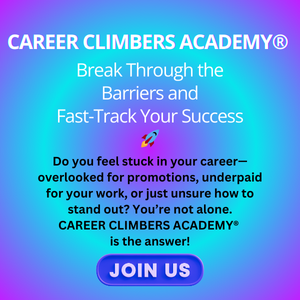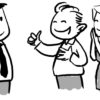The World Has Changed. Everyone is talking about the importance of customer centricity. But they should be actioning quantum customer centricity! Let me explain.
Many people think that customer centricity is the same as customer experience. They’re wrong! At least if they are thinking about the traditional CX model.
As we start a new year, I am celebrating the official launch of the New CX Model Quantum Customer Centricity (QC2™) … Beyond CX. After decades of learning and experimentation, I created QC2™ so that every business can successfully adopt a customer-first strategy, and become more agile, more resourceful, and experience increased market growth.
If you prefer to listen rather than read:
Adopting a Customer-First Strategy is Essential
The CX Index states that 90% of businesses, regardless of the vertical they are operating in, have made CX their primary focus. And research by Gartner concluded that 80% of organizations expect to compete mainly based on CX.
Therefore, you could already have been left behind, unless you’ve started on your journey to increased customer centricity! But there is a big difference between talking about putting the customer first and doing so.
The CEI Survey found that 86% of buyers will pay more for a better customer experience. However, only 1% of customers feel that vendors consistently meet their expectations.
That’s good news for you late adopters, as it means you may still have time to benefit from delivering a better CX experience for your customers, but you must act NOW!
And anyway, why wouldn’t you? The benefits are huge!
According to research, customer-centric companies grow their revenues 4% to 8% faster than their market competitors. Not only that, 79% reported significant cost savings, and 84% increased their revenue.
But how do you optimise your own customer-first strategy, and where do you begin?
Why Traditional CX is Letting You Down Without You Even Knowing It!
Most discussions about customer experience only consider the interaction between the customer and the company. As a result, most effort goes into improving customer service departments and call centres.
Since these departments tend to be either small or even outsourced, changes to them have little impact on how a business works. And unfortunately, they are also rarely of great interest to top management.
The customer journey is often seen as linear and only impacting the different departments at distinct points in time. Even if customer emotions are considered at each touchpoint, which is already an improvement on the usual journey map, it remains limited and static.
In addition, information about the customer may be gathered, but it is rarely shared across departments, let alone integrated for deeper knowledge and understanding of the customer.
All of this has resulted in individual actions being taken without a holistic view of the customer or their experience. That is why so few organisations succeed in delighting the customer with their customer-first strategy adoption.
It’s time for a new CX model!
The Quantum Customer Centricity™ (QC2) Model
The new CX model, Quantum Customer Centricity™ (QC2), was inspired by the universe’s very foundation, i.e. the atom.
Quantum physics works to uncover the properties and behaviours of the very building blocks of nature down to the atomic level. Similarly, QC2 is a Multi-Dimensional Approach that identifies, assesses, and then applies atomic changes that will bring you quantum growth.
The QC² model’s nucleus is the customer. And just like electrons, the three essential elements of customer centricity – the company, the brands, and the processes – revolve around and through the constantly evolving customer.
Unlike most traditional CX models, which are limited, static and siloed, QC2 reflects the dynamic and ever-changing interrelationships between all four of these components.
When they are all working in harmony, amazing quantum results are achieved.
However, when they are not synchronized, they can vibrate out of control and then collide with devastating consequences.
So why has the traditional CX model been so wrong?
One reason is that many people who speak about CX have not had much experience in the corporate world helping an organisation to put customers at their heart. They’ve merely read books and maybe asked a few questions from those with experience.
Having led the Global Consumer Excellence initiative at Nestle, and consulted with numerous Fortune 500 companies on the topic, I know the challenges of adopting a new strategy that makes the customer the very nucleus of the business.
I have experienced first-hand how difficult it can be to get an organisation to change its ways of working. But this is what must happen if QC2 is going to bring the benefits that many companies already enjoy.
According to Forrester, there has been a significant 80% revenue increase for organizations focusing on CX. But they must do it the right way, integrating and adapting all four elements of a customer-first strategy.
They may need to review and make changes to the way their organisation is structured, what its mission and vision include, how well it understands its customers or the processes it uses to build its brands.
By identifying the biggest opportunities and then leveraging its strengths, a company can make fast and profitable progress on its journey to customer-centricity.
How QC2 Helps Businesses and Their Employees
QC2 takes a multi-dimensional view of the four moving parts of a customer-first strategy. It boosts business by leveraging your strengths while identifying the biggest growth opportunities. It finds the small, key changes that will maximise your company’s benefit.
And these smaller, atomic transformations are far more likely to succeed than larger ones.
A Gartner survey found that employees’ willingness to support enterprise change has fallen from 74% in 2016 to just 43% in 2022, no doubt due to extensive changes being thrust upon them by uncaring top management.
QC2 is a breakthrough approach that integrates rather than replaces what you are already doing well, so progress is made faster and usually also considerably cheaper.
It creates greater agility, delivering more targeted and accelerated results than most of the traditional models typical to larger organizations.
When we integrate changes in the four elements of a customer-first strategy, productivity increases by 20% on average, because of enhanced employee engagement and belief in greater customer focus.
Driving employee engagement doesn’t come easily, as I am sure you already know. Haiilo’s research has shown that worldwide, only 20% of employees are engaged with their work.
However, a Gallup report on employee engagement shows that companies with a highly engaged workforce have 21% higher profitability. They also have 17% higher productivity than companies with a disengaged workforce.
So, it turns out that what is good for your customers, is good for your employees too. A real win-win for the whole organisation.
How much would you gain from happier employees and more loyal customers?
The 4 Essential Elements of the New Model of CX
Four elements of a successful customer-first strategy need to be reviewed and integrated. They are the customer (of course!), the company, the brands and the processes.
As you can now see, working only on the relationship between the customer and the company will not bring success. It only involves the direct interaction of the two, which limits impact to just a few departments. QC2 involves every employee, as you will now discover since they all have a role to play.
Let’s look at each of these in more detail and review a few examples of how they should be involving the customer. Of course, there are many more ways than are listed here, but you’ll get a more detailed explanation if you accept this free download of the book “The Art and Science of QC2 … Beyond CX.”
How a New CX Model Can Impact Your Organisation
For a company to become more customer-centric, it may need a new culture. It’s not just another project to be completed as quickly as possible. Customer centricity is a never-ending, continuous, but highly rewarding and profitable journey.
Committing to making your customers the nucleus of your business results in higher employee engagement and a more positive work culture. Employees finally understand how their role builds to greater customer satisfaction and delight.
Research shows that mission-driven workers are 54% more likely to stay for five years or more in a company and 30% more likely to grow into high performers.
Tony Hsieh knew this. After induction training that shared Zappo’s mission, vision and values, new recruits were offered $2,000 not to join. 95% said no to the money as they wanted to work for such an inspiring company.
The company mission and vision statements should clearly communicate the direction and values of the organisation. They should inspire and motivate all employees in their day-to-day work and help them understand the bigger picture than that of their individual roles or departments.
A customer-centric company will include the customer in its mission and vision, explaining what it does for them and why.
Look at your mission statement and ensure it is inspiring, motivating and customer-centric. And then imagine what you could achieve with more loyal and engaged employees who are motivated by your new mission!
How a New CX Model Can Impact Your Brands
Your brand is not what you think it is! It’s what your customers think it is; its brand image, personality, and value to them. Therefore it is vital that you measure these regularly.
Now while you are probably measuring the image of your brands, you should also be measuring the image of your corporate brand if it appears in your communications or on your brands’ packaging. And if it does, have you also considered their interaction on each other?
Corporate branding is important because it defines the business’s personality, characteristics, values and purpose. This can lead customers to choose your product or service over others because they admire your purpose, believe in your cause or share similar values.
The corporate brand name may or may not appear on your packaging and communications, but if it does, the relationship between its image and that of your main brands must be considered.
Sometimes, the corporation starts as the only brand in its portfolio, but it may develop or acquire other brands over time. That is when it becomes vital to understand the relationship between the two.
There are both advantages and disadvantages to a strong corporate brand. It can aid awareness, provide a consistent look and voice for its brands, and drive customer loyalty.
However, it can also become too commonplace when a company has numerous brands, especially in the same category. It can also harm a brand’s image if there is a discord between the two.
One of our multinational clients discovered that several of their brands in certain categories were being harmed by being associated with their corporate brand. By identifying the benefits and damages of the association, we were able to free certain categories from the overt corporate connection while strengthening ties with the company name where it made sense.
Do you know if your corporate name is helping or hindering your brands when it appears on your packaging and communications?
How a New CX Model Can Impact Your Innovation
Did you know that 95% of innovations fail and that it is essentially because most new offers are in fact not innovations at all, but mere renovations?
Many companies struggle to truly innovate because they start from their current internal technical skills. That is why they tend to develop what are renovations, such as new colours, pack sizes or tastes.
By launching true innovations, a business can attract new customers and grow market share. Renovations rarely do that.
One of the easiest ways to innovate is to watch and listen to your customers. A lack of creativity in a business often results from a limited and linear approach to innovation.
Our clients, on the other hand, use a virtuous circle rather than a linear funnel. The process starts and ends with opportunity identification, in other words, with the customer and insight. It is, of course, always adapted to each client’s specific needs and adjusted to integrate with their current processes to speed adoption and change.
What are you launching? Innovations or just renovations? Are you an industry leader or just a follower?
How a New CX Model Can Save Your Budget
An important part of QC2 is identifying the needed intelligence, starting with an audit of all available information. Most information is bought by and usually remains in the various departments of an organisation.
Without time to request and share information across a company, significant resources can be wasted in acquiring knowledge, much of which may not even be exploited.
Research confirms that 68% of data is not used by businesses who invest in it — that’s over two-thirds of data – and budgets – wasted!
CATSIGHT™ is our proven methodology for maximizing the ROI of your information investments. It was first developed more than ten years ago and is mentioned in the globally acclaimed book “Winning Customer Centricity: Putting Customers at the Heart of Your Business – One Day at a Time.”
Over the years, CATSIGHT™ has been optimized and used by multinationals, agencies and PMEs across the world to improve the value of their intelligence investments.
The method focuses on analyzing available information before any data gathering is carried out, and which, if commissioned, is only to fill identified knowledge gaps. This avoids unnecessary expenditure, increases actionability and ensures maximum value is obtained from all surveys and reports purchased.
A food and beverage multinational was regularly conducting market research surveys to answer their marketing and sales questions. By implementing CATSIGHT™, they were able to eliminate numerous expenditures while also gaining more actionable insights that impacted their growth.
With an average cost of $20-50,000 or more per project, that can quickly add up in terms of budget savings!
CATSIGHT™ is a 7-step process that starts with category identification and ends with action.
The seven steps can be summarized as follows:
C Identify the category/brand for which you want to develop an insight.
A Convert the business objective into a customer-centric objective or aim.
T Identify the target customer group for which you will develop the insight.
S Gather the support of a team of multi-disciplinary experts.
I Start customer connections & walk in their shoes.
G Review all available information and identify any gaps.
HT Develop an insight based on a human truth.
A pharmaceutical client invested in an annual study that recorded trends, but never provided action plans to accelerate growth. We uncovered a unique engagement strategy by reviewing, integrating, and analyzing all their data and information. This enabled them to compete effectively with the leaders in the market without increasing budgets.
Using this 7-step process, you will be able to develop actionable insights for any brand in any category of any industry. It really is that powerful!
Conclusions about the Power of Quantum Customer Centricity
This article has summarised a few of the elements of the new Quantum Customer Centricity™ (QC²) Model. If you know your customer focus could be improved, download the free book “The Art and Science of QC2 … Beyond CX” by clicking on the link below. In it, you will find numerous more examples and tools than the ones mentioned above.
If your CX model is lacking in areas other than those mentioned, please comment below.













